#mongolian steppe
Text
The Real Steppe: Udgans & Böös
On the Azim Steppe we encounter some udgans like Sadu Dotharl and Tumulun Mol. What is an udgan and why is there 'böö' in the title?
A 'böö' is a shaman, whereas an 'udgan' is a shamaness. Talking about shamanism on the Eurasian steppe is a big topic. So at the end, I'm going to recommend some extra reading for those who want to delve deeper.

Overview
When we talk about shamanism on the Eurasian steppe we tend to be talking about practitioners belonging to Tengrism, which is the religion practiced by many Mongolians but expands out of Mongolia's borders, such as into Siberia.
The main principles around Tengrism revolve around the sky gods, known as the Tengri, but also around animism and nature.
There is a whole perspective of the cosmos through Tengerism, which a person's 'ger' or 'yurt' can serve as a map, so where things are placed is important, and there are rituals that may be performed within them. With animism there are spirits in all things, so there is a connection everywhere. Milk is seen as holy water in their traditions and milk products are often used as offerings to spirits. Arkhi (vodka made from milk) and kumis (fermented milk) also get used. There is an interesting implication I will come to with some of the lore of the Azim Steppe here.
For the sake of this post, I want to focus on a few points that can be related to FFXIV. Those main focuses are:
Types of Shamanism
Milk & also it's relation to the Ugund
Souls, Afterlife and Reincarnation, with ties to the Dotharl
But this only touches the surface of a much bigger topic.
Types of Shamanism
Tengri Shamanism is split out into 3 types, though we do not really see them explored in Final Fantasy XIV and their udgans, but I think they can leave some room for speculative analysis.
The three types are: yellow, black and white.
Black Shamans:
They get the name from the direction they drew their power and they are supported by black deities and spirits and they also worship their ancestors. They intended to overcome evil by pitting might against might.
White Shamans:
They personified humanity and their practices related to deed and called upon peaceful masters from the white side and directing their worship in that direction. They have people commune with nature and earth spirits and pacifying any angry ones.
Yellow Shamans:
There were introduced in Mongolia by the spread of Tibetan Buddhism, it is closer to white shamanism but incorporates Buddhist beliefs and practices.
Reinterpreting for FFXIV:
Sadu's job/class is represented as Black Mage, though she is referred to as an Udgan. But in the world of Final Fantasy XIV, certain 'jobs' appear in different parts of the world under different names and practices. Like Warriors with their berserking and the Chaghan tribe and the Will of Karash. Or how Geomancers of the East are like conjurers of the West. So with Sadu she appears to be a black mage. And pitting might against might sounds like her thing and also true of black mages with the Void. Unlike Black Mages we do not see Sadu draw power from the Void. But I feel Sadu's magic would be more in tune with the concepts of Black Shamanism.
On the note of White Shamanism. There's the calling upon peaceful masters, communing with nature and earth, which sounds very White Mage/Conjurer like. Though I sincerely doubt there are any intended connections, but these may be the kind of connections I tend to think about when writing a character related to the steppe (as an RPer).
The Significance of Milk

In FFXIV we have reference to some of the milk-based drinks you will find in Mongolia. There is kumis, arkhi and steppe tea. Ever wondered why they put Ala Mhigan salt crystals in the crafted recipe for Steppe Tea? It's likely because it's based on 'Suutei Tsai', which is the name given to a savoury tea from Mongolia, which is very milky and savoury (hence the salt).
But in terms of religious practices, if you see arkhi served in a ger in Mongolia, you might see somebody dip their finger in and offer some arkhi vodka to the sky, the earth and to their forehead. This is an offering made to the spirits that may be done before they drink it. There's many ceremonies that involve milk as holy water, such as at weddings where they may drink kumis or milk from respective families to the bride and groom or during shamanistic rituals.
On the Azim Steppe there is also a tradition relating to milk and that's with the Ugund tribe. Their flavour text is below:
When members of this tribe die, their heads are removed from their bodies and placed in a jar of fermented goat milk. Once the liquid has been drunk by the head (in other words, evaporated), the head is then buried under an anthill so that the tiny workers can carry the spirit to the afterlife. The journey is thought to be a terrible one, the road filled with ghosts of the damned, so ensuring the spirit is drunk helps ease the journey.
At first glance it looks like the idea is that the spirit finds comfort in their journey to the afterlife by being intoxicated, but it does specify milk. Given it 'holy' nature, I expect this would provide a boon to the dead spirits of ugund in their journey.
The 3 Souls & 3 Worlds
I find the 3 souls concept of Tengrism interesting, though it can be more than 3 souls depending on beliefs, but in short, each of us have at least three souls within us, the suns, suld and ami.
The suld sits in our crown chakra whilst the suns and ami sit in our chest. The suns and ami have to be in balance with each other, else you may be susceptible to illness. A shaman is able to perform rituals that help rebalance them. It is also possible for suns and ami to become disembodied, but the suld is vital to life and you will die if you lose it. If the suns and ami are gone for a period of time then you will fall ill.
Suld - This resides in nature after death. This is vital to life, without it, you will die. This has a connection to father heaven and the tengger that live there. It's the most individualised and it is your nature spirit. It carries no past-life experiences but develops characteristics to distinguish you from other people, like your charisma and dignity.
Suns - Reincarnates after death. This contributes to the formation of your personality and carries the collective experiences of past lives. It's also comes from the lower world and in death will return there and may also return as a ghost. The suns has the strongest past-life memories. But significantly evil suns may end up extinguished forever. The suns can temporarily leave the body and sometimes wander as far as the lower world.
Ami - This is the body soul, which also reincarnates after death. It is called the 'breath' soul, if it exits the body it'll result in illness. It returns to the world tree in death and roosts in the tree branches between heaven and earth in the form of a bird. They tend to reincarnate through relatives and carry genetic or ancestral memory and these enter the body at birth.
As we reference three worlds here too: they are comprise of the upper, middle and lower worlds, which I referenced in my post on Morin Khuur with its symbolism. The upper world is represented by the heavens and the lower world can possess evil and malicious spirits and has more superstition and taboo surrounding it. The crossing over into the lower world is also represented as crossing a river.
There's a few nuggets of information I've represented above that may elicit some connections. So I will break them down.
The idea of the suns and ami souls reincarnating can maybe be related to the Dotharl, where only the udgan can tell a person's previous life, this remains consistent with the point that in Tengrism only shamans can see these souls. Could it be that the Dotharl follow the 'suns' soul and sense its past lives to know who it once belonged to and help them learn who they were and continue their life in a new body?
The talk of the Ugund journey to the afterlife being filled with the ghost of the damned could be referencing the suns of the lower world.
And one can draw a comparison to the lower world and life stream if you wanted, though there is not causal relationship here in Final Fantasy lore, but the similarity can make for comparison. But of course, something like this in Final Fantasy could have been inspired by something like the River Styx, as it's not an exclusively Tengri imagery used for passing into a lower world
Learn More:
This is a huge topic and this post scratches the surface, but I thought these were interesting aspects that have some references (some loose) in FFXIV's lore.
This is a pretty good online resource, the author is a Tenger Shaman and I also have a copy of their book, which covers much of what's on there as well as some of the rituals: http://buryatmongol.org/a-course-in-mongolian-shamanism/
And a video of a Tenger Shaman talking about his profession:
https://www.youtube.com/watch?v=DONJywWRjf4
#ffxiv#final fantasy xiv#azim steppe#lore#mongolia#rp#The Real Steppe#mongolian steppe#xaela#ffxiv xaela#au ra#shamanism#tengri#realsteppe
63 notes
·
View notes
Photo

MONGOLIAN STEPPE
2012
3 notes
·
View notes
Text

#columbo#season 4#negative reaction#me when asked to recall the name of some guy who apparently united the tribes of the mongolian steppe
81 notes
·
View notes
Text


The unifier.
#mongol empire#mongol history#mongolia#genghis khan#temujin#batyr#Mongolian horse#steppe#nomad#horse#warrior#archer#mongolian warrior
25 notes
·
View notes
Text


snakeniil….i thought he’s closer to the earth so he’s closer to the kin as well. soo i researched ongolian alphabet…. and I wrote two words (both probably grammatically incorrect). One means mogoy(=snake) and second one is syyl (=tail)
#yes his tail is a word tail#also I thought abt au where artemy is mongolian bogatyr and he travels in the steppe. so ine da he meets daniil who’s like#mistress of malachite mountain alike creature (he’s like. A guradrian of a place. A swamp in our case)#so they meet and daniil wants artemy to stay because he’s warm bug and soft. and artemy is Scared#drawing#art#sketch#illustration#pathologic#artists on tumblr#digital illustration#digital art#daniil dankovsky#artemy burakh#burakhovsky
82 notes
·
View notes
Text
How Mongol society divided itself
The popular belief that the Mongol society was organised into tribes and clans based on descent from a common ancestor is a mischaracterisation. Recent Research suggests that Mongol society had a strict social stratification, with an aristocracy known as the White Bone and commoners known as the Black Bone. The genealogies preserved by historical sources refer to the ruling elite and aristocracy, rather than the Mongol people as a whole.
While Chinggis Khan's family and ruling members belonged to the Borjigon obog clan, the rest of the community were known as the Borjigon irgen, or people who belonged to the Borjigon. This structure is much more feudal than previously thought.
#Mongolia#Mongolian history#Mongolian empire#Mongol Empire#central asian history#Central Asia#Steppe history#East Asia#east asian history#Medieval history
33 notes
·
View notes
Text

Magnai makes sure his Nhaama has a place to stay and finds him reading books he brought with him from Old Sharlayan historians about the Steppe. Frost asks him to correct inaccuracies or elaborate so that he can better represent their culture. Magnai falls asleep peacefully to the sound of his voice in his lap
#ffxiv#ffxiv art#magnai#magnai oronir#ffxiv oc#my art#viera#male viera#rava viera#ffxiv viera#azim steppe#stormblood#I styled it after a Mongolian ger (yurt in game I believe)
13 notes
·
View notes
Text
Seeking advice from folks who hopefully have more knowledge than me for three very different kinds ofnew (to me) music to listen to in the coming year:
- choral, shapenote and plainchant music that *isn’t* Christmas carols. I fucking adore music from these genres every year at Christmas and then realise I don’t know where to look for more that isn’t Christmassy. I did a bit of a short dive when we were watching Carols From Kings this year and saw some potential pointers, but please point me at your favourites. Modern or traditional arrangements of medieval, renaissance and 17th century work, or newer works; please, lay them on me!
- modern music made by indigenous peoples from the Americas, Sami, Mongolian Steppes, Ainu, Australian Aboriginal folk and South Pacific Islanders. I don’t mind the genres, but I’d really love to hear more music people who have been so marginalised and silenced are making now with the internet to share and distribute it, and hopefully ways to get paid for it too on places like Bandcamp. I’ve heard some stunning modern Mongolian throat singing and rapping and I’ve seen incredible mixes of traditional and modern dance from folk like Notorious Cree, but I admit I’m not 100% sure where to start in looking for more. If this is your music, please put ways I can pay you to listen to your music because I’m very aware how shitty streaming services are for that!
- good writing playlists of 1910s music hall and 1920s Chicago jazz and blues; I’m working on a queer urban fantasy novel set in 1920s Chicago with significant flashbacks to 1910s England and it’s always nice to have soundtracks to set the mood while you write!
#looking for advice#share your links#shapenote#plainchant#choral#music#indigenous american#pacific islander music#mongolian and steppes#sami#ainu#1920s jazz and blues#1910s musichall
5 notes
·
View notes
Text
oh fuck i forgor i need to draw my gann because hes been living in the very back of my mind for over 10 slutty slutty years and is now re-emerging from the Sludge
#as always i like 2 have a little fun he has more of a mongolian steppes energy in my brain than in game#its essential to me bc of the kind of terrain rashemen is
2 notes
·
View notes
Text
It was a disaster, but Christian hopes briefly revived when Tamerlane, a Mongol chieftain who made Genghis Khan look well adjusted, led new steppe incursions into the Muslim world.
"Why the West Rules – For Now: The patterns of history and what they reveal about the future" - Ian Morris
#book quote#why the west rules – for now#ian morris#nonfiction#disaster#christianity#hopea#revives#tamerlane#mongolian#genghis khan#comparison#well adjusted#steppes#muslim#incursion
0 notes
Text
Warhorses: Which horses are actually good candidates, anyway?
This post is in honor of @warrioreowynofrohan, who asked the question in the comments under my guide, "Horses: Since There Seems To Be A Knowledge Gap". Their question, "Given what you said about too much weight breaking a horse’s spine, how did that work with knights in plate armour?" is one I'm going to try to answer here, since the answer can be very nuanced depending on where and when you're talking about.
Also, while I was a stable hand for years as well as a rider, I never had the opportunity to directly learn more ancient styles of tacking, horse training, and combat, so I don't have any direct experience to draw from with regard to horses used for military purposes. I'm still gonna do my best here with what I know, and research what I don't.
As I've covered in the past, large horses (draft horses) make less-than-ideal warhorses, and so do carriage horses like the elegant and dramatic Friesians.
Let's begin by addressing this from the perspective of creative writing. For you writers and content creators out there, an essential part to the continuity of any historically-themed work you do involving horses will be depicting breeds of horses that didn't exist before a certain time in history. I'm going to approach this question from the stance of, "Medieval-type era warhorses". Horses were used in warfare as late was World War II, but actual horses you ride into battle with knights and archers and bannermen? We actually have to drop the subject of specific modern breeds altogether aside from using them for comparisons.
When discussing warhorses, various cultures have approached them differently. Some cultures will value a specific type of horse above all others, such as the Mongolian Steppe Horse or the American Mustang. Other cultures, which may be from biomes and territories where multiple types of horses are needed for different forms of warfare and tactics, value whichever horses can get their jobs done without their riders getting killed.
Carrying vs. Pulling:
Horses have been used in warfare since as far back as 4000 BC, but their first applications were more as chariot horses. Humans have been riding and working with horses since before we even had stirrups to more easily ride them with! As archaeologists and anthropologists make more discoveries, the more we learn that we humans have been working closely with horses since before we had specialized tools to ride them with. The very first warhorses pulled chariots or carts, which is much easier for a horse's anatomy to handle compared to carrying a heavy weight like an armored rider on their backs, which puts stress directly on their spines where they have very little supporting muscle for supporting a lot of heavy downward weight.
Warhorse Size Categories:
Really, any breed of horse can apply to a niche in warfare if it's needed enough. Even very small, delicate horses have had their place in the history of human combat! Before I continue, it's important to know that there's a unique unit of measuring a horse's height. Rather than measuring a horse's height in centimeters or inches, they're measured in units called "hands". A single "hand" = ~4 inches/10.16cm, and a horse's height is measured based upon the distance between the bottom of their hoof to the tallest part of their shoulders, just at the base of the back of their necks. We don't actually include neck length/head height in a horse's measurements with traditional measuring.
Another rule of thumb: The average horse cannot safely carry anything heavier than about 30% of their total body weight. This is a serious factor to take into mind when deciding on a type of or breed of horse for a mounted warrior of any kind: You need to factor in the OC's starting body weight, and then add on the weight of armor, weapons, and any armor the horse itself may wear along with the weight of its tack.
Light-Weight Horses:
A few examples of lightweight horse breeds whose ancestors have historically been used in combat are Arabians, Barber Horses, and the magnificent Akhal-Teke. Lightweight and delicately-boned horses like those are best applied for military maneuvers that require precision, speed, and endurance, and the rider themselves should specialize in some form of combat or reconnaissance that doesn't require them to wear heavy metal or laminated armors. Archers are good candidates for riding smaller horses, or lightly-armored swordsmen like an Ottoman Janissary.
Central-Asian and North African horses also benefit from having a higher tolerance for hot climates. They can absolutely suffer from heatstroke and cardiac arrest from being forced to run and work in extreme temperatures and should always be provided with the same protective measures in a heatwave as any other horse, but they have a little bit of an edge over horses descended from freezing and temperate climates.
Medium-Weight Horses:
Medium-weight horses started showing up in the archaeological record around about the Iron Age, where chariot warfare was becoming an increasingly utilized form of mobile combat, and people needed bigger, stronger horses capable of pulling heavier loads - such as a chariot with two passengers rather than just one. As cultures began to develop heavier-duty armors made of metals and laminated materials, it also became important to breed horses that were tall and stocky (muscular and with relatively short spines compared to their height), and therefore more capable of carrying riders in increasingly heavy armor. Medium-weight horses were also essential at the dawn of the gunpowder age when the cannon came into use in siege warfare for pulling the heavy, iron cannons into position.
Medium-weight horses are really where we see the beginnings of knights and other warrior classes on horseback come into the forefront of warfare. When you have a horse that's big and strong enough to carry heavier armor and heavier weapons along with a rider wielding them, you have a much deadlier force at your disposal. Strikes from a sword or spear from the back of a galloping horse basically results in a sword capable of cutting through enemy soldiers like a hot knife through butter.
Important Note: Traditionally, cavalrymen wield blunt swords when attacking from a charging horse's back. When a horse is charging at full speed, the sharpness of a blade becomes less important than the blade's ability to stay in one piece when it impacts hard armor and bone. A blunted edge basically turns a cavalryman's sword into a thin club that's better at holding up against smashing through multiple layers of armor and bone compared to a thinner, more delicate sharpened edge that can shatter from a high-speed impact.
Heavy-Weight Horses:
The direct ancestors of modern draft horses, such as the Shire Horse, only began to appear around about the beginning of the European Medieval Era, and were far and away not even close to the enormous sizes of the draft horses we have today. Any horse counts as a "Heavy-weight" classed horse if its weight exceeds 1500lbs/680kgs.
Heavy-weight horses were really more bred for pulling enormous weights rather than carrying knights. While yeah, there is some evidence that suggests that heavy-weight horses were used by heavily-armored knights, historians argue a lot about whether it was a rule or an exception (such as with Henry VIII, who continued to ride well after he had begun to weigh more than 350lbs/158kgs, and even went to war in France in his final years on horseback). Generally speaking, medium-weight horses tend to be the right balance of agile and strong for carrying someone that's going to actively be fighting. Heavy-weight horses were bred to be a lot more tolerant to the chaos and frightening stimulation of the sounds of battle, but medium-weighted horses generally tended to be more suited to moving efficiently through dense packs of soldiers and weaving around other horses.
Ponies:
While actually being the smallest class of warhorse, ponies were essential when it came to carrying cargo and working as pack-horses. In certain forms of terrain, such as mountains, large horses pulling big carts full of supplies or soldiers could often be extremely impractical. In situations where an army needed to move on foot and form a narrow line in order to travel, ponies were able to traverse much narrower and rougher terrain while carrying smaller loads to their destination, when heavier horses would struggle more under their own weight and dexterity.
Europe-Specific Terminologies:
If you're a writer reading this and writing a piece set in the European Medieval age, there are specific terms used for the different classes I listed of warhorses above that I'm gonna list:
Destriers: The Destrier was a universal term for the iconic knight-carrying, jousting horse. They were also sometimes referred to as "Great Horses" due to their reputations in combat settings. Destriers could have just about any appearance, but were rarely taller than 15.2 hands, or 62inches/157cm. They were capable of carrying heavily-armored knights (although knights in full plate mail rarely rode into battle and stayed on the horse the entire time - they tended to specialize at grouping up and killing a lot of footsoldiers swarming them at once and preventing breaks in defenses from being overwhelmed by an oncoming army; in the case of Edward the Black Prince, we have substantial evidence in the form of his surviving brigandine that a mounted soldier or knight was more likely to wear chainmail and brigandine with a tabard on their body with their arms, feet, and heads the most heavily armored in plate when they intended to fight on horseback, making them a little lighter and more maneuverable, but I may be waaay off base there because I'm thinking of more of Italian soldiers who used full plate and how they applied it in battle more than any other example) and wearing armor themselves.
Interestingly, the sex of a destrier was often chosen strategically. Stallions (horses that haven't been neutered) are more aggressive, and could both act as combatants on their own if their knight was dismounted or killed, but could give away an army's location if they were attempting to move stealthily. Stallions whinny and shriek a lot when they're horny or arguing with each other, which is most of the time.
Mares were often chosen by Muslim armies for being much less vocal, and therefore much more capable of stealth. Geldings (neutered males) were the preferred mounts of the Teutonic Knights, a Catholic military group, since they couldn't be stolen and used to breed more horses for the enemy army.
Coursers:
Coursers were the most common Medieval European warhorse. It's important to remember that in Medieval Europe, most armies were almost entirely comprised of common men - serfs subject to the will of their landlords, not far removed from slaves in many ways - who couldn't afford the highly-prized and expensive Destriers. Coursers were usually a bit lighter than Destriers, but were still strong enough to carry someone wearing armor. Coursers were also a little more utilitarian, because they were also sometimes used in hunting as well as warfare, so they had a valuable use outside of warfare that the owner could benefit from.
Rouncey:
A rouncey was an all-purpose horse that could be used for leisure and travel-riding as well as be trained for war. They were a lot more likely to be found on the farm of a serf or independent farmer of some kind, as they could fill a lot of different roles depending on what they were needed for. Their sizes weren't really important as much as their ability to get the job done.
It's also critical to remember that, when talking about warhorses, we're usually talking about eras long past. In general, thanks to resource availability and incredible advances in medicine, modern humans are significantly taller, and therefore heavier, than people from the European Medieval era and prior. While fatness was valued in many cultures for its suggestion of wealth, most working-class and serf-class people worked intensely physically-demanding daily lives just to maintain their own homes. They were a few inches shorter on average than we are today, had greater fluctuations in body fat distribution depending on how harsh or bountiful the harvest season had been and the season in which a war was taking place (the average person's weight would swing by 30lbs or more on average every year prior to the industrial era), and cavalry were usually chosen based upon skill in the saddle as well as physical size when considering the application of medium or heavy armor being placed on the horse's back and body.
241 notes
·
View notes
Note
sensei what would "the left and right hands" wedding look like? more steppe or more capital? in the town or in the fields? would danya wear his snakeskin coat to his own wedding?
pt. 1 wedding ideas steppe edition
Ohh, i have so many words in my little head i doubt i can fit them in just one post. Im quite certain people wouldn't care much about my letters so i brought pictures >:)
also im currently feeling very nauseous almost 24/7 so pls wait a bit before i get my strength back and post the second part
To make it short, i think they respect each other upbringings and cultures enough to do both.
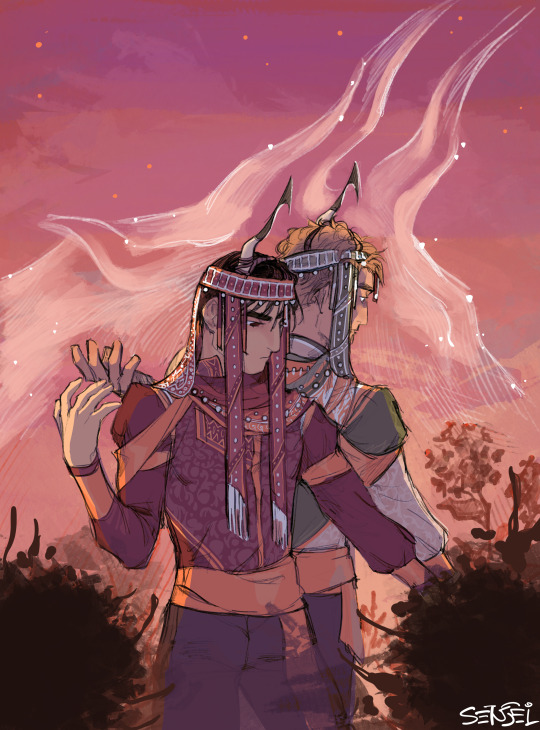
First of all, since we already have a concrete idea of what a wedding to the Kin is — which is the sacrifice of a Herb Bride in order to wed her to the Earth — there might be a need for an alternative ritual for the declaration of eternal companionship. I think of it as a dance still but not where one is caressing the Earth, but showing her the connection of two people. Of how they complement each other through dance (earthly tango of sorts). As if a silent song of movement and fabric. And so to add even more meaning to the Kin's dance.
Though, frankly speaking, i have a big grudge with such bare (hehe) selection of clothing ipl gave to the Kin. I doubt all the festivities and ceremonies wouldn't require special kind of wardrobe. Atleast for the sake of convenience. (Ohh how i'd love to draw all the different jewelry and accessories the herb brides would wear and everything and anything....)
I pretty much looked for the same cultures which were used for the creation Kin's language ( Tibetan, Mongolian, Buryat ) to imagine my own idea of such costumes. These people have such gorgeous headwear and bright fabrics and beautiful embroidery, I can't be doing it justice with my art. My main goal was to make the costumes use mainly head accessories and visually light materials so the gays can move and dance freely. But thanks to this little question i might draw more of it and maybe even post it!!!!!
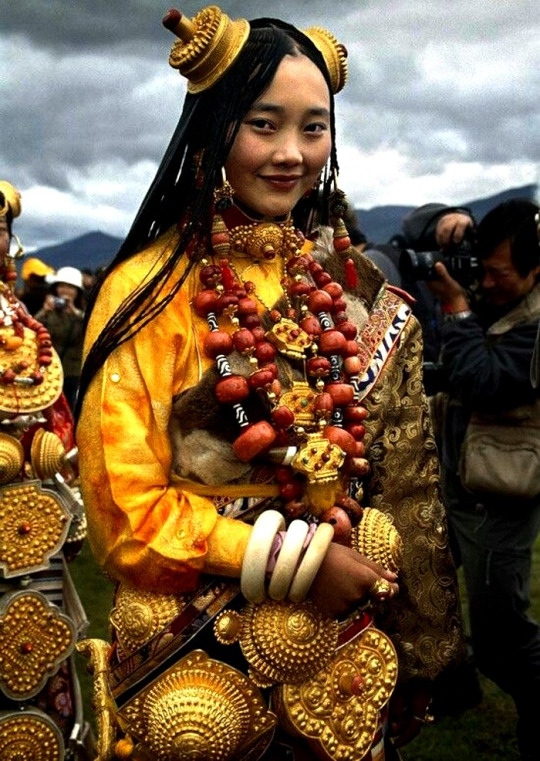
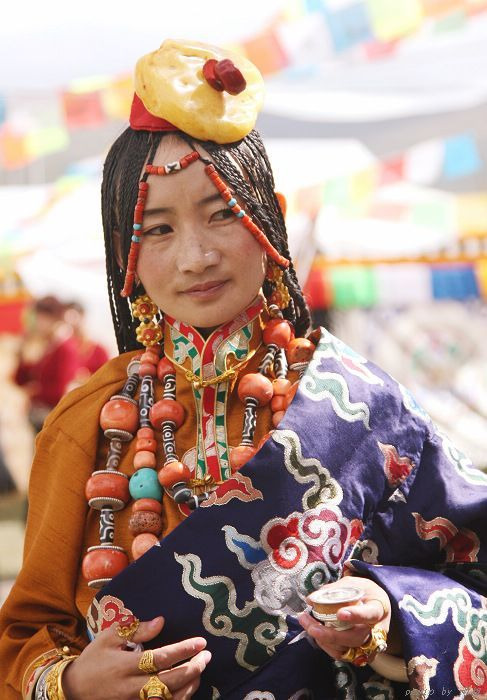
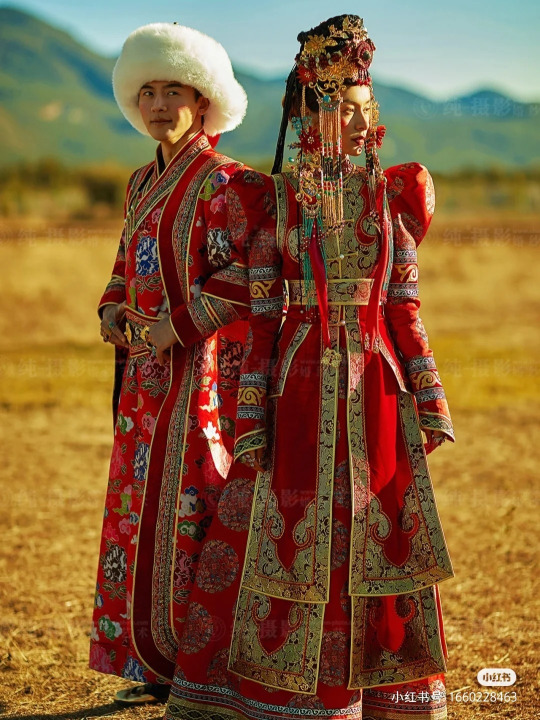
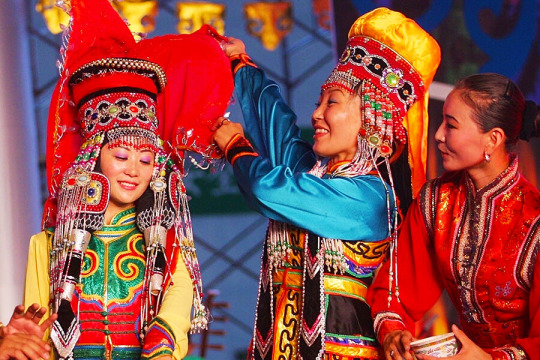
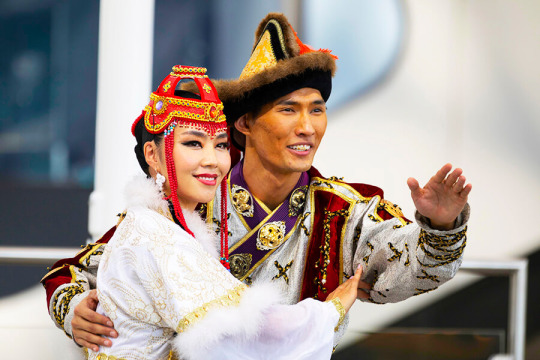
All in all, 5/10 execution cause i'm too stupid for beautiful clothes
these are literally so pretty i want to stare at it :c
plus a more private sketch with our newlyweds c:
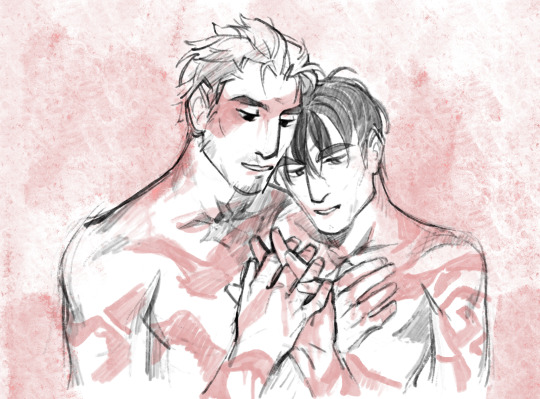
thank you for reading this c:
#rambling into the void#pathologic#мор утопия#daniil dankovsky#artemy burakh#burakhovsky#burda#бакаруспик#artists on tumblr#herb bride#wedding??#not wedding??#who knows
172 notes
·
View notes
Text

The Falconer: Mongolian Steppes
72 notes
·
View notes
Text

Endangered Wild Horses Return to Kazakhstan for the First Time in at Least 200 Years
The international effort, led by the Prague Zoo, released seven Przewalski’s horses to their native steppe habitat in central Asia.
In a triumph for conservation, seven endangered Przewalski’s horses—the planet’s last truly wild horse species—have been returned to their native habitat in Kazakhstan.
The homecoming is the product of decades of efforts from biodiversity advocates and environmentalists internationally. Now, for the first time in at least 200 years, the horses—also known as takhi or Mongolian wild horses—will freely roam their native steppe in central Asia, where archaeologists have suggested humans first domesticated horses roughly 4,200 years ago.
Przewalski’s horses were first documented by Western researchers in the late 19th century, and at that time, they could only be found in Mongolia. Over the next decades, human activity brought the horses to the brink of extinction. Some of their population was taken into European and North American zoos, and in the 1960s, the species was declared extinct in the wild...
Read more: https://www.smithsonianmag.com/smart-news/endangered-wild-horses-return-to-kazakhstan-for-the-first-time-in-at-least-200-years-180984538
142 notes
·
View notes
Text
If not for the EPA effectively banning small pickup trucks like these:

and the ATF banning these

every rancher in Wyoming would have one of these:

and we would sweep out from the steppes and conquer the paste-eating city dwellers like our Mongolian cousins did in the last millennia
285 notes
·
View notes
Photo
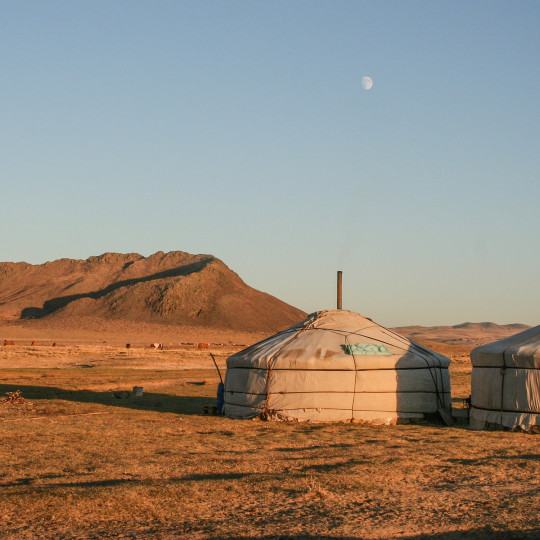
Yurt
A yurt (ger in Mongolian) is a large circular tent made of wool felt stretched over a wooden frame used by nomadic peoples of the Asian steppe since before written records began. Yurts are especially associated with Mongol herders and hunters and were famously used by such figures as Genghis Khan (r. 1206-1227 CE). Made in various sizes and even sometimes permanently erected on top of carts for ease of mobility, yurts have become one of the identifying features of the nomads who still today carve out a living in the often harsh climate of the remotest parts of Eurasia.
Continue reading...
237 notes
·
View notes